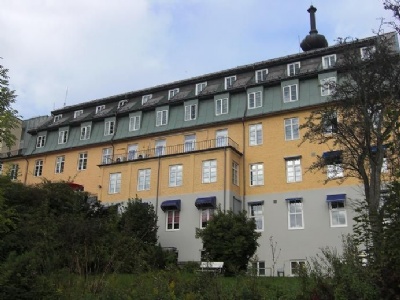Godthaab
In December 1935, SS chief Heinrich Himmler founded Lebensborn. This was an institution where racially approved families and single women could get help and advice regarding pregnancy and reproduction. At Lebensborn, women could also come and give birth and recuperate after giving birth. The responsibility for Lebensborn ended up in a department within the SS called RuSHA (SS-Rasse- und Siedlungshauptamt). RuSHA was responsible for ensuring the Aryan race within the SS and it was therefore natural that Lebensborn was placed under RuSHA. 1938 Lebensborn (program) was transferred to Himmler’s personal staff (Hauptamt Persönlicher Stab Reichsführer-SS).
RuSHA was also responsible for SS membership applications. In order to be admitted to SS, the applicants had to meet certain racial criteria. Even when an SS man wanted to get married his future wife was investigated by RuSHA to secure she meet racial criteria. Only after RuSHA: s approval the couple in question could get married. Besides this, it also fell on RuSHA to investigate the racial origins of people in countries occupied by the Germans.
Himmler sought to take care of all people, especially children, who were of Aryan origin and to raise them in the spirit of National Socialism (germanization). Racial approved children kidnapped in the occupied countries could be placed on Lebensborn before being placed in approved German families. Sometimes it is claimed that Lebensborn was a breeding station where pure SS men could and come and have sex with racially approved women in order to make them pregnant, but this is incorrect.
Lebensborn was established in already existing orphanages or other similar institutions. The first Lebensborn was established in a small village called Steinkaring, east of Munich. About 30 Lebensborn were established, of which 13 were in Germany (including Austria) and just over 10 in Norway. Roughly, about 20,000 children were born at Lebensborn, about 8,000 in Germany. How many other children ended up at Lebensborn is more difficult to establish. During the war, the Germans kidnapped about 250,000 children from eastern Europe, some of whom ended up at Lebensborn before being placed in German families.
In Bårum, northwest of Oslo, a convalescence home called Godthaab had been set up in 1925. In 1941, the Germans requisitioned Godthaab and established an orphanage within the framework of Lebensborn. All children at Godthaab was a result out relations between German military servicemen and Norwegian women. Godthaab had about 160 beds and was thus the largest Lebensborn established in Norway.
Current status: Preserved (2010).
Address: Gamle Ringeriksvei 148, 1356 Bekkestua.
Get there: Car.
Follow up in books: Pringle, Heather: The Master Plan: Himmler’s Scholars and the Holocaust (2006).


During the German occupation of Norway between, April 1940 and May 1945, about 12 000 children was born (first ones in January 1941) as a result of relations between german military service men and norwegian women. About 8,000 of these ended up in one of the ten Lebensborn set up in Norway. Of these, only 1,000 were born at Lebensborn. After the war, the Norwegian women (germansees) who had had a love affair with German soldiers were despised and seen as traitors. Some were beaten and their children was seen as bastards and discriminated by the state in a way that brings to mind the thirties of Germany where the Jews were discriminated against because of their involuntary origin. Several woman who were accused of having social- or sexual relationships with germans during the war were incarcerated in both prisons and mental hospitals, about 3000 were deported to Germany and deprived of their Norwegian citizenship. The children did not have it easy, but were seen from the Norwegian side as potential fifth columnists and risked being incarcerated. Only in the 2000s did the children receive compensation from the Norwegian state. Still, there are many children from different Lebensborn who do not know who their real parents are. Godthaab is now a health and rehabilitation center.